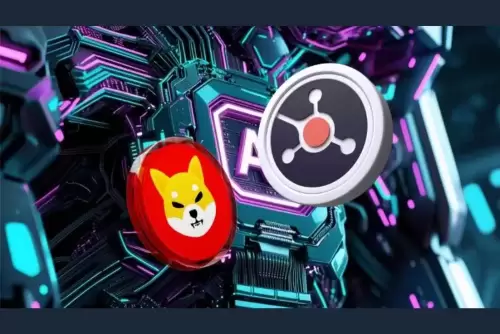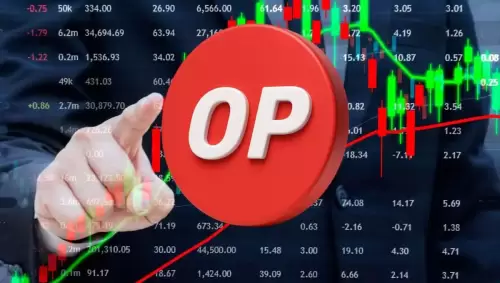 |
|
 |
|
 |
|
 |
|
 |
|
 |
|
 |
|
 |
|
 |
|
 |
|
 |
|
 |
|
 |
|
 |
|
 |
|
Cryptocurrency News Articles
The Decentralized Finance (DeFi) Market: Key Trends and 2025 Outlook
May 20, 2025 at 07:12 pm
The decentralized finance (DeFi) sector has experienced remarkable growth and innovation in recent years, positioning itself as one of the most transformative segments within the broader cryptocurrency ecosystem.

The decentralized finance (DeFi) sector has experienced remarkable growth and innovation in recent years, positioning itself as one of the most transformative segments within the broader cryptocurrency ecosystem. As of early 2025, the total value locked (TVL) in DeFi platforms consistently hovers above $60 billion, reflecting both sustained user interest and increasing institutional participation. Major DeFi protocols such as Aave, MakerDAO, and Compound continue to dominate the market, presenting a substantial share of lending, borrowing, and stablecoin activity.
Key findings for 2025 highlight the following trends:
* DeFi protocols have integrated with layer-2 scaling solutions to lower transaction costs and throughput, rendering DeFi applications more accessible to a broader user base. Arbitrum and Optimism have played a role in expanding the adoption of decentralized derivatives and decentralized exchanges (DEXs).
* The launch of Ethereum’s “Dencun” upgrade in 2024 is expected to drive down transaction costs further, with implications for user behavior and protocol usage in 2025.
* Major financial institutions are experimenting with decentralized protocols for liquidity management and settlement, particularly with stablecoins. This move is spurring new opportunities in fiat-linked tokens and real-world asset (RWA) tokenization.
* Regulatory clarity is slowly emerging, with the European Union’s Markets in Crypto-Assets Regulation (MICA) rolling out gradually from 2024 and the U.S. Securities and Exchange Commission (SEC) engaging more actively with DeFi protocols. However, this process is presenting challenges for protocols that wish to operate across multiple jurisdictions.
* The DeFi sector has also been subject to several high-profile hacks and exploits, leading to a focus on best practices in smart contract security and mitigation strategies.
Looking ahead, market analysts anticipate further growth in DeFi adoption through 2025 and beyond, driven by ongoing technological advancements, increasing regulatory clarity, and a growing roster of real-world asset integrations. Opportunities abound in areas such as on-chain derivatives, permissioned DeFi for institutions, and tokenized asset markets, with leading platforms actively piloting new products and partnerships to capture emerging demand. The sector’s resilience and adaptability underscore DeFi’s potential to play a central role in the future of global finance.
Decentralized Finance (DeFi) platforms have undergone significant transformation since their emergence, evolving from experimental protocols to robust financial ecosystems commanding billions in total value locked (TVL). As of 2025, DeFi represents a mature segment of the crypto market, underpinned by a diverse range of protocols offering services such as lending, borrowing, trading, asset management, and synthetic assets. The global market has expanded beyond early adopters, with increased participation from retail and institutional investors.
The evolution of DeFi is closely tied to the development of blockchain infrastructure, particularly the Ethereum network, which remains the primary host for DeFi protocols. According to Ethereum Foundation, the network’s transition to proof-of-stake and subsequent scalability upgrades have lowered transaction costs and improved throughput, enabling a broader range of financial products and increased user adoption.
Major DeFi platforms such as Aave, Compound, and Uniswap continue to lead the sector, collectively accounting for a substantial share of the TVL. As of early 2025, TVL across all DeFi protocols remains resilient, fluctuating between $60-80 billion depending on market conditions, as reported on-chain by leading platforms. Uniswap, for instance, has solidified its position as the dominant decentralized exchange, with daily trading volumes rivaling those of some centralized exchanges.
DeFi’s growth has also been propelled by the expansion into new blockchain ecosystems. Protocols like Polygon and Solana have attracted both developers and users through lower fees and higher transaction speeds, fostering cross-chain interoperability and composability.
The current state of DeFi is characterized by ongoing innovation in risk management, security, and regulatory compliance. Protocols have introduced advanced features such as on-chain governance, automated risk assessment, and insurance offerings to address challenges from earlier years. Industry collaborations, such as those spearheaded by the DeFi Safety initiative, focus on setting standards for transparency and operational resilience.
Looking ahead, DeFi platforms are expected to further integrate with traditional financial institutions, spurred by regulatory clarity and the development of compliant DeFi products. The proliferation of real-world asset tokenization and institutional-grade protocols suggests that DeFi will play a significant role in the broader financial sector. The market outlook for the next few years projects steady growth, driven by technological advancements, user-centric innovations, and expanding global participation.
The technological landscape of Decentralized Finance (DeFi) platforms continues to evolve rapidly in 2025, with core protocols and key innovations shaping the market’s structure and future prospects. At the heart of DeFi remain foundational smart contract platforms, particularly Ethereum, which maintains its status as the leading ecosystem for DeFi due to its mature developer community, robust infrastructure, and extensive protocol interoperability. The Ethereum network’s transition to proof-of-
Disclaimer:info@kdj.com
The information provided is not trading advice. kdj.com does not assume any responsibility for any investments made based on the information provided in this article. Cryptocurrencies are highly volatile and it is highly recommended that you invest with caution after thorough research!
If you believe that the content used on this website infringes your copyright, please contact us immediately (info@kdj.com) and we will delete it promptly.


























































